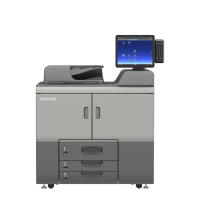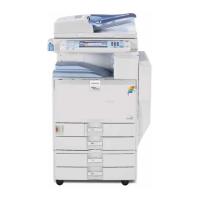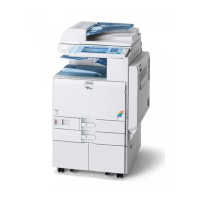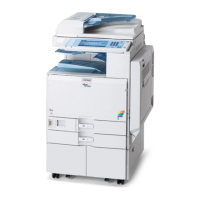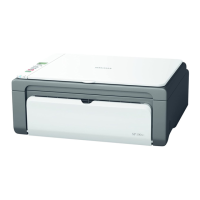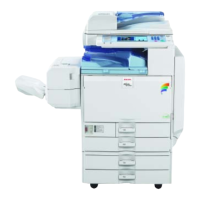31 October 2001 DRUM
6-23
Detailed
Descriptions
6.6.2 DRUM DRIVE MECHANISM
Mechanism
Main motor [A] (dc motor)
↓
Belt [B]
↓
Gears [C]
↓
The drum rotates.
NOTE: 1) The main motor encoder sends pulses to the main motor control board
(1020 pulses = 360 degrees).
2) The CPU on the board monitors the pulses and controls the drum speed
and stop positions.
3) The drum has four sensors.
• Master eject position sensor [D] (master eject position and HP)
• Feed start sensor [E] (feed start timing)
• Second feed timing sensor [F] (jam detection)
• Paper exit timing sensor [G] (jam detection)
4) The drum has two stop positions:
• Master eject (home) position
• Master feed position (feed start timing sensor + 121 pulses (43
degrees))
C238D019.WMF
[A]
[B]
[C]
[D]
[E]
[F]
[G]
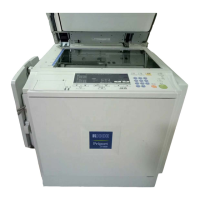
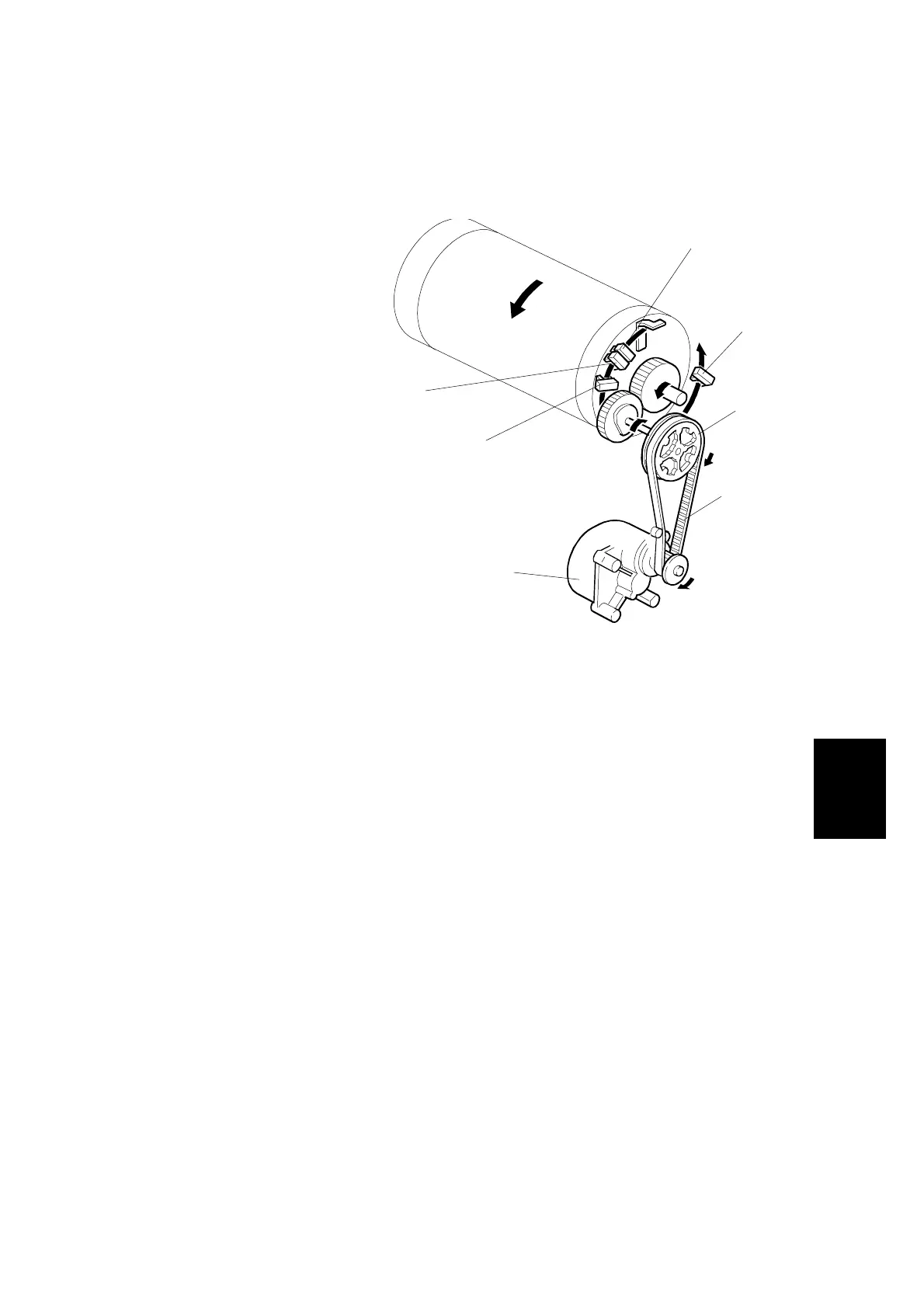